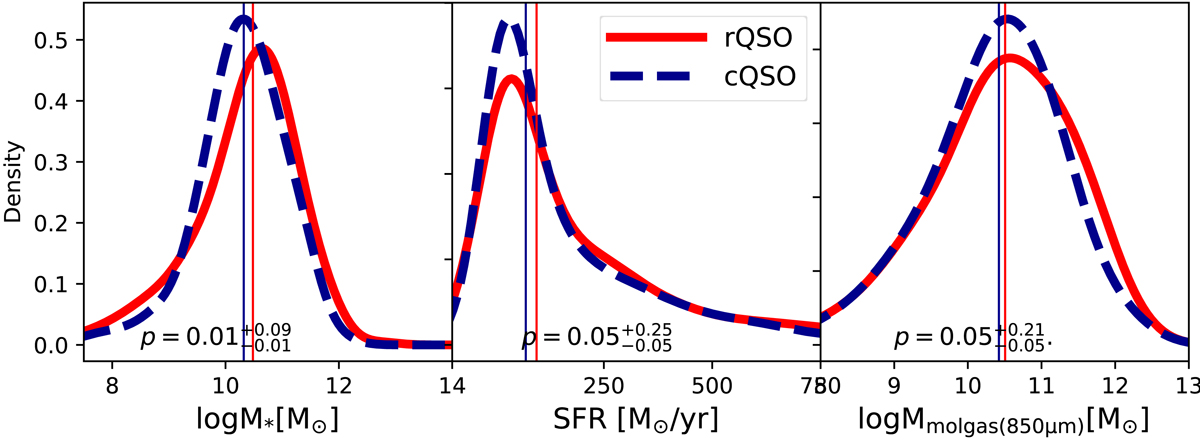Fig. 11.

Composite posterior distributions of host galaxy parameters inferred through SED-fitting. These are constructed by sampling 100 realisations from the posterior distributions of each source, and we apply a KDE with a bandwidth for 0.3 for display as explained in detail in Sect. 2. Stellar masses are estimated based on the modelling of near-infrared and optical emission with stellar population models (Bruzual & Charlot 2003). Star formation rates are computed based on total infrared luminosities (LIR(8 − 1000 μm)) from the modelling of the infrared photometry with cold dust models (Schreiber et al. 2018). Molecular gas masses are estimated from monochromatic luminosities of the dust continuum SED at 850 μm and the empirical relation by Scoville et al. (2016). No significant differences are found between the distributions of red and control QSOs for these host-galaxy parameters.
Current usage metrics show cumulative count of Article Views (full-text article views including HTML views, PDF and ePub downloads, according to the available data) and Abstracts Views on Vision4Press platform.
Data correspond to usage on the plateform after 2015. The current usage metrics is available 48-96 hours after online publication and is updated daily on week days.
Initial download of the metrics may take a while.


